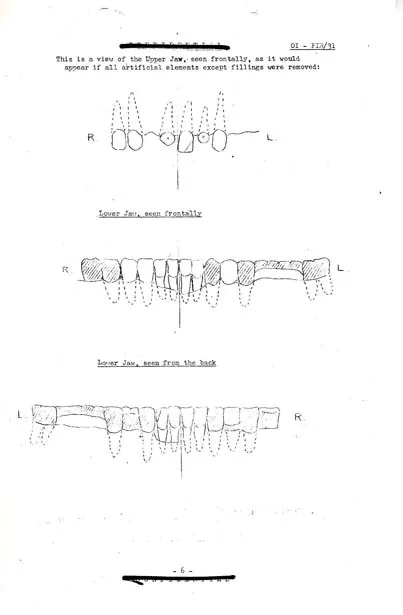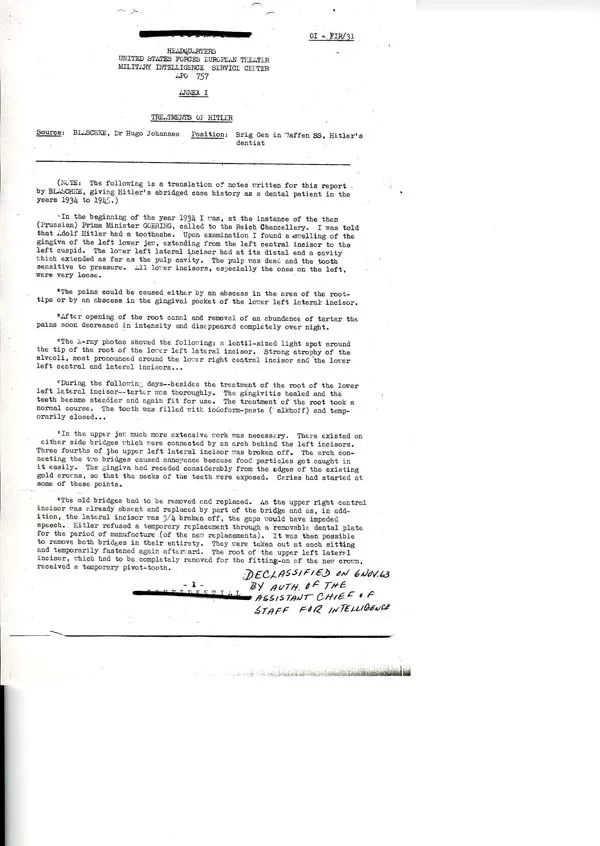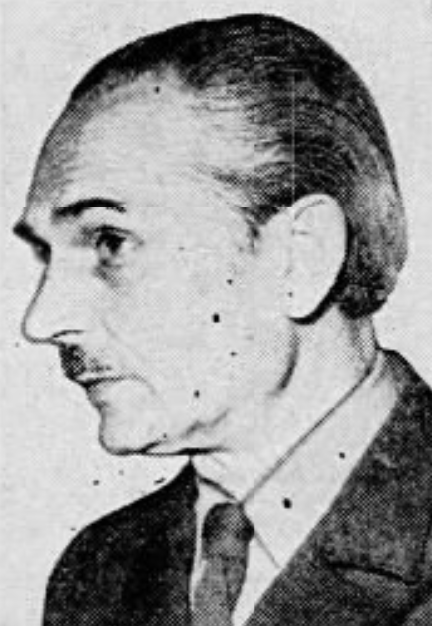Dr. Hugo Johannes Blaschke was frustrated. His patient was constantly delaying appointments, did not brush the teeth he wanted to keep, and only rang for Blaschke when it was well past the point of an emergency.
His patient? Adolf Hitler.
And while most of us have been guilty of lying to our dentist about the frequency of our flossing, most of us have never been accused of crimes against humanity.
For his own part, Blaschke did not receive the memo of “Thou shalt do no harm” — with historians arguing over his political complicity during the war.
Born in West Prussia in 1881, Blaschke studied in Berlin before graduating with a degree in dentistry from the University of Pennsylvania in 1911.
A dental officer in the Germany Army during World War I, Blaschke returned to Berlin after the war and opened a private practice. It was there that Blaschke quietly worked for nearly a decade before coming to the attention of Hermann Göring in 1930. As the personal dentist to the soon to be appointed Commander in Chief of the Luftwaffe, Blaschke was soon introduced to Nazi elite. Four years later and one year after Hitler rose to power, Blaschke was asked to treat the Führer for the first time.
Blaschke reported that after performing a root canal Hitler’s pain “soon decreased in intensity and disappeared completely overnight.” So impressed with the dentist, Hitler helped him climb the ranks of the Nazi party with Blaschke “joining the SS in 1935, becoming Sturmbahmführer (major) in charge of dental care for the whole SS, and then transferring to the Waffen SS, the elite paramilitary organization within the SS,” per the National Archives.
Unsurprisingly, however, Hitler was less than a stellar patient.
During a 1946 interrogation, Blaschke was critical of Hitler — but not for being the driver behind the mass murder of millions.
According to the National Archives, a U.S. Army report deemed Blaschke “arrogant and unbothered by World War II and its aftermath.”
The dentist’s main frustration? His unreliable patient. To Blaschke, the Second World War was a side note in his quest to relieve Hitler’s dental woes.
Due to poor hygiene, Blaschke noted that Hitler sported numerous untreated cavities, crowns and chipped teeth “with pieces broken off.”
“Hitler’s remaining original teeth were discolored and loose,” writes Miriam Kleima for the National Archives. “He had gingivitis and needed extensive work. One of his incisors was broken. He had two old dental bridges and the arch connecting the bridges “caused annoyance because food particles got caught in it easily.” Hitler rejected a temporary replacement (until the new bridge was ready), fearing it might affect his speech.”

Blaschke would treat Hitler infrequently — much to the dentist’s chagrin — throughout the war, being called only when needed.
After the Allies marched on Paris, liberating the capital city in August 1944, Hitler called upon the dentist after being bedridden with an incapacitating pain in his upper left jaw. The impending loss of the Third Reich surely didn’t help.
Finding a severe infection, Blaschke insisted on another root canal. The date was set for December 16, 1944.
“Since the offensive in the West had started that morning I did not treat him,” Blaschke later told the Army Counter-Intelligence Corps.

Blaschke treated Hitler one last time in mid-February of 1945, less than two months before the Führer committed suicide. Blaschke’s war, like so many others, was finished. Captured in Austria by the Americans on May 20, 1945, the dentist was part of the effort to identify Hitler’s remains.
Released from prison in 1948, Blaschke continued to work as a dentist in Nuremberg until his death at the age of 78. And while the arrogant dentist hardly paid penance for the unique role he played in Nazi Germany, through his records, there is a least some grim satisfaction knowing that Hitler was plagued by debilitating pain on a daily basis.
historynet magazines
Our 9 best-selling history titles feature in-depth storytelling and iconic imagery to engage and inform on the people, the wars, and the events that shaped America and the world.






